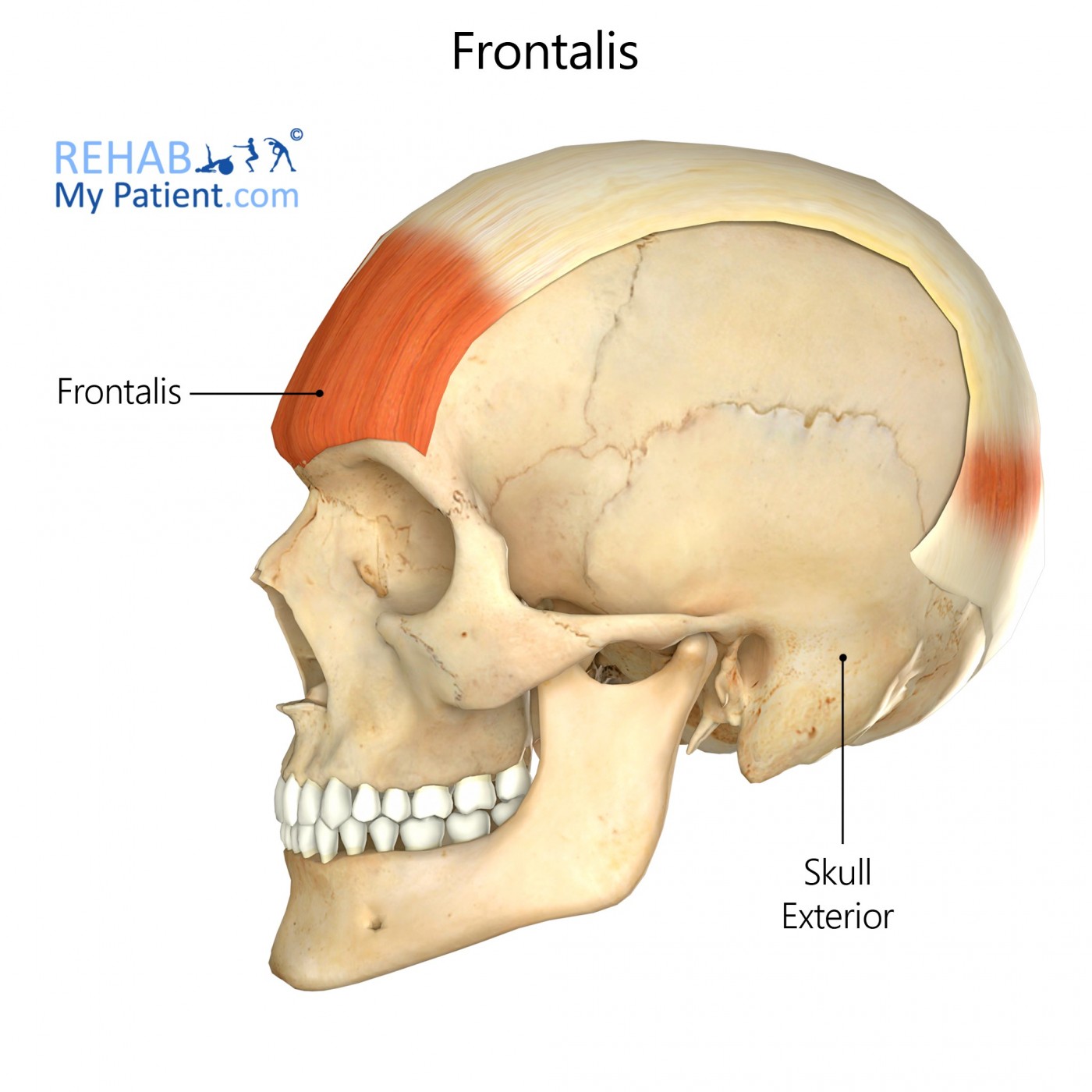Frontalis
Posted on 23rd Jul 2020 / Published in: Head

General information
Frontalis, also referred to as the epicranius, is a muscle of the forehead which adheres to the superficial fascia. It is often considered to be synonymous with the occipitofrontalis muscle.
Literal meaning
The muscle at the front of the skull.
Interesting information
This large, quadrilateral shaped muscle is responsible for lifting the eyebrows which makes it an essential anatomical structure for human emotional expression. Frontalis also manipulates the forehead and eyebrows when a person attempts to view an object that is too far away or when the lighting is too dim for clear visualization.
Frontalis can become strained from repetitive or prolonged use such as persistent frowning or focusing on a distant or unclear object for an extended period. Many people tense their frontalis muscle while engaging in everyday activities without realizing it. Frontalis strain manifests through pain across the forehead or tension headaches.
The best way to relieve strain on this muscle is to either rest it and apply a cool compress or gently massage the forehead. Massage stimulates blood flow to the forehead and can relieve frontalis muscle tension.
Origin
Galea aponeurotica
Insertion
Near the ridge just above the eyebrows
Function
Frontalis is responsible for raising the eyebrows and wrinkling or tensing the forehead skin as well as shifting the aponeurosis forward (anteriorly). It weakly assists in raising the eyelids.
Nerve supply
Facial nerve (cranial nerve VII)
Blood supply
Ophthalmic artery

Relevant research
Frontalis muscle flap-based reconstruction can provide favorable aesthetic and functional results for patients requiring eyelid rebuilding that is full thickness and involves more than 50% of the eyelid. Conventional methods involve unnecessarily bulky muscle flaps and result in forehead scars. This new method constitutes an important surgical reconstruction advancement.
Jean RD, Wong WW, Martin MC. (2011). “Single-stage frontalis muscle flap for full-thickness reconstruction of the upper eyelid”. J Craniofac Surg. 22(5).
Surgical suspension of the frontalis muscle flap has been shown to be effective in treating congenital blepharoptosis in young children. This procedure may prevent developmental abnormalities in children suffering from this condition.
Hou D, Li G, Fang L, Li B (2013). “Frontalis Muscle Flap Suspension for the Correction of Congenital Blepharoptosis in Early Age Children”. PLoS ONE 8(1): e53185. doi:10.1371/journal.pone.0053185
Frontalis exercises
To relieve tension in your frontalis muscle, sit in a comfortable chair and frown while lowering your eyebrows as much as possible. Hold this position for five seconds then immediately raise your eyebrows as high as possible while smiling. Hold this position for five seconds then repeat the entire exercise ten times.


An alternate method for relieving frontalis tension is to simply give yourself a gentle forehead massage. Begin with your fingers just above your eyebrows. Then make small circles with your index and middle fingers, slowly moving up to your scalp. When you reach your hairline, start back at the eyebrows again.

Sign UP
Sign up for your free trial now!
Get started with Rehab My Patient today and revolutionize your exercise prescription process for effective rehabilitation.
Start Your 14-Day Free Trial